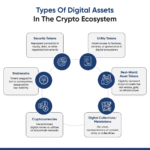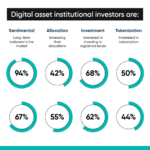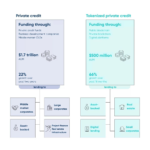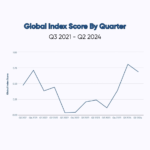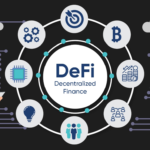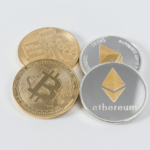Introduction to Asset Tokenization
The digital transformation of financial markets has accelerated in recent years, driven by advances in blockchain technology. Among the most significant developments is asset tokenization, a process that converts real-world assets into digital tokens on a blockchain. These tokens can represent ownership in tangible assets like real estate, commodities, and art, or intangible assets such as intellectual property. Asset tokenization is poised to revolutionize the way we perceive, interact with, and trade assets by increasing accessibility, liquidity, and transparency in global markets.
Asset tokenization is more than just a technological advancement; it signifies a paradigm shift in asset ownership and transfer. By leveraging blockchain’s decentralized ledger system, tokenization enables fractional ownership, where investors can purchase smaller portions of an asset rather than having to buy the whole thing. This democratizes investment opportunities and allows for a broader pool of investors to participate in markets that were traditionally inaccessible due to high entry costs.
Moreover, the creation of digital tokens that represent real-world assets provides a new level of transparency and efficiency in transactions. These tokens can be traded on blockchain-based platforms without the need for intermediaries, reducing transaction costs and time. This has far-reaching implications for various sectors, including finance, real estate, art, and commodities, as it opens up new avenues for investment and liquidity.
How Tokenization Works
Tokenization is the process of converting ownership rights to an asset into a digital token on a blockchain. This token represents the value or a portion of the asset and can be traded, transferred, or held just like other digital currencies, such as Bitcoin or Ethereum. Tokenization leverages blockchain technology to create a decentralized, transparent, and secure way to manage and trade assets.
1. The Basics of Tokenization
At its core, tokenization involves creating a digital representation of a physical or intangible asset. This asset could be anything from real estate, art, and commodities to financial instruments like stocks or bonds. The digital tokens created through this process are recorded on a blockchain, a distributed ledger that ensures the integrity and immutability of the data.
2. Blockchain and Smart Contracts
Blockchain technology is essential to tokenization because it provides a decentralized and secure environment for recording transactions. Each token is linked to a specific asset and can be programmed with smart contracts, which are self-executing contracts with the terms of the agreement directly written into code.
Smart contracts automate processes such as transferring ownership, distributing dividends, or executing trades when certain conditions are met. For example, in the case of tokenized real estate, a smart contract could automatically transfer ownership of a property once payment is confirmed.
3. Fractional Ownership
One of the key features of tokenization is fractional ownership. Unlike traditional asset ownership, which typically requires purchasing the entire asset, tokenization allows for the division of the asset into smaller fractions, each represented by a token. This means that investors can buy a portion of an asset, such as a share in a piece of real estate or art, rather than the entire asset. Fractional ownership lowers the barrier to entry, making it easier for smaller investors to participate in markets that were previously inaccessible due to high costs.

4. Liquidity and Market Access
Tokenization enhances liquidity by making it easier to buy, sell, and trade assets. Traditionally, assets like real estate or fine art are illiquid, meaning they are difficult to sell quickly without a significant loss in value. Tokenization creates a digital marketplace where these assets can be traded in smaller units, increasing the number of potential buyers and sellers and facilitating faster transactions.
Additionally, tokenization can open up markets to a global audience. Because tokens can be traded on digital exchanges accessible from anywhere in the world, investors can participate in markets that were previously limited by geographic or regulatory constraints.
5. Security and Transparency
Blockchain’s decentralized nature ensures that all transactions are transparent and tamper-proof. Every transaction involving a token is recorded on the blockchain, creating a permanent and auditable record. This transparency reduces the risk of fraud and provides greater confidence to investors. Furthermore, the security features of blockchain, including encryption and consensus mechanisms, protect the tokens from unauthorized access and ensure that the ownership of assets cannot be altered or forged.
Historical Context and Evolution
To fully understand the impact of asset tokenization, it is essential to explore its historical context and evolution. The concept of tokenization is not entirely new. In traditional finance, tokenization referred to the practice of representing sensitive information with a non-sensitive equivalent, called a token, to safeguard data. However, the advent of blockchain technology has expanded the scope of tokenization to include the representation of real-world assets.
The journey of asset tokenization can be traced back to the early days of blockchain, with the introduction of Bitcoin in 2009. Bitcoin, a decentralized digital currency, demonstrated the potential of blockchain to disrupt traditional financial systems. However, it was the development of Ethereum in 2015 that truly paved the way for asset tokenization. Ethereum introduced the concept of smart contracts—self-executing contracts with the terms of the agreement directly written into code. This innovation allowed for the creation of decentralized applications (dApps) and the issuance of tokens representing a wide range of assets.
The first major example of asset tokenization occurred in 2017 with the emergence of Initial Coin Offerings (ICOs). ICOs allowed companies to raise capital by issuing digital tokens in exchange for cryptocurrencies like Bitcoin or Ethereum. While many of these tokens represented utility within a specific platform, the concept of issuing tokens to represent ownership in real-world assets quickly gained traction.
Over the past few years, we have seen the tokenization of a wide array of assets, including real estate, art, commodities, and even intellectual property. As blockchain technology has matured, so too has the infrastructure supporting asset tokenization, leading to the development of more sophisticated platforms and regulatory frameworks.
Technological Framework
The technological framework underpinning asset tokenization is centered around blockchain technology, smart contracts, and decentralized ledgers. These technologies work together to create a secure, transparent, and efficient system for the creation, transfer, and management of digital tokens representing real-world assets.
Blockchain Technology
Blockchain technology is the foundation of asset tokenization. A blockchain is a decentralized and distributed digital ledger that records transactions across multiple computers. This ensures that the data is immutable, meaning it cannot be altered or deleted, which provides a high level of security and transparency.
Each transaction on a blockchain is grouped into a block, which is then added to a chain of previous transactions, forming a continuous and unchangeable record. This structure ensures that all parties involved in a transaction have access to the same information, eliminating the need for intermediaries and reducing the risk of fraud.
In the context of asset tokenization, blockchain technology enables the creation of digital tokens that represent ownership in a real-world asset. These tokens can be transferred between parties on the blockchain, with each transaction being recorded on the ledger. This provides a transparent and efficient way to transfer ownership, without the need for traditional intermediaries like banks or brokers.
Smart Contracts
Smart contracts are another crucial component of the asset tokenization framework. A smart contract is a self-executing contract with the terms of the agreement written into code. When the conditions of the contract are met, the contract automatically executes the agreed-upon actions, such as transferring ownership of a token.
Smart contracts are stored and executed on a blockchain, ensuring that the terms of the contract are transparent and cannot be altered. This eliminates the need for intermediaries, reduces the risk of human error, and ensures that transactions are carried out efficiently and securely.
In asset tokenization, smart contracts play a key role in the creation, management, and transfer of tokens. They can be used to automate complex processes, such as the distribution of dividends to token holders or the enforcement of regulatory compliance.
Decentralized Ledgers
Decentralized ledgers, also known as distributed ledgers, are a critical component of blockchain technology. Unlike traditional centralized ledgers, where a single entity controls the data, decentralized ledgers are maintained by a network of computers (nodes). Each node in the network has a copy of the ledger, and all copies are synchronized and updated with each new transaction.
This decentralized structure ensures that no single entity has control over the ledger, reducing the risk of fraud and manipulation. It also increases the transparency and security of transactions, as all parties have access to the same information.

Decentralized ledgers are essential for asset tokenization, as they provide the infrastructure needed to record and transfer ownership of digital tokens. They also enable the creation of decentralized exchanges, where tokens can be traded directly between parties without the need for a central authority.
Additional Technologies in Asset Tokenization
While blockchain, smart contracts, and decentralized ledgers serve as the foundational pillars of asset tokenization, a constellation of other technologies significantly enhances the process.
Cryptographic Algorithms
At the heart of asset tokenization’s security lies cryptography. These complex mathematical functions are employed to safeguard sensitive data and authenticate identities. For instance, public-key cryptography generates a pair of keys—a public key for encryption and a private key for decryption. This mechanism underpins secure transactions, ensuring that only authorized parties can access and modify asset data. Additionally, hash functions create unique digital fingerprints of data, making it virtually impossible to alter information without detection. This integrity is paramount in preventing fraudulent activities and maintaining trust in the tokenized asset ecosystem.
Consensus Mechanisms
To ensure the integrity and security of a blockchain network, consensus mechanisms are utilized. These protocols enable network participants to agree on the validity of transactions. One common method, Proof of Work (PoW), involves miners solving complex computational puzzles to validate and add new blocks to the blockchain. Although PoW is energy-intensive, it provides a high level of security. In contrast, Proof of Stake (PoS) selects validators based on the amount of cryptocurrency they own, offering a more energy-efficient approach. Other methods, such as Delegated Proof of Stake (DPoS) and Proof of Authority (PoA), introduce variations in how validators are chosen and how consensus is reached. The selection of a consensus mechanism depends on factors like security needs, transaction speed, and environmental considerations.
Oracle Networks
To bridge the gap between the digital world of blockchain and the physical world, oracle networks play a crucial role. These decentralized systems collect and verify real-world data, such as stock prices, weather conditions, or property valuations, and feed this information into smart contracts. For example, a tokenized real estate asset’s value might be linked to property tax assessments obtained through an oracle network. This integration of external data enables smart contracts to make informed decisions and execute agreements based on real-world events.
Interoperability Protocols
As the asset tokenization landscape expands, the need for seamless communication and data exchange between different blockchain platforms becomes increasingly important. Interoperability protocols facilitate this interaction, allowing tokens and data to move freely across diverse ecosystems. For instance, the Polkadot network employs parachains to connect independent blockchains, enabling cross-chain transactions. Cosmos uses a similar approach with interconnected zones. By fostering interoperability, these protocols enhance liquidity, expand market reach, and promote the growth of the tokenized asset economy.
These complementary technologies, in conjunction with blockchain, smart contracts, and decentralized ledgers, create a robust and secure infrastructure for asset tokenization. Their combined power unlocks new possibilities for asset ownership, trading, and management, driving innovation across various industries.
Use Cases and Applications
The potential applications of asset tokenization are vast, spanning multiple industries and asset classes. By transforming real-world assets into digital tokens, tokenization opens up new opportunities for investment, liquidity, and efficiency.
Real Estate
Real estate is one of the most promising sectors for asset tokenization. Traditionally, real estate investments have been illiquid and inaccessible to many investors due to high entry costs and complex legal requirements. However, tokenization allows for the fractional ownership of real estate, enabling investors to purchase smaller portions of a property.
For example, a $10 million commercial property could be tokenized into 1,000,000 tokens, each representing a 0.0001% ownership stake in the property. Investors could purchase as many tokens as they like, allowing them to gain exposure to the real estate market without needing to invest large sums of money.
Tokenized real estate can be traded on blockchain-based platforms, providing liquidity and enabling investors to easily buy and sell their ownership stakes. This has the potential to revolutionize the real estate market by making it more accessible and efficient.
Art
The art market is another area where tokenization is gaining traction. Historically, art investments have been reserved for the wealthy, as purchasing a valuable piece of art often requires significant capital. However, tokenization allows for the fractional ownership of art, enabling a wider range of investors to participate in the market.
For example, a $1 million painting could be tokenized into 100,000 tokens, each representing a 0.001% ownership stake in the artwork. Investors could purchase tokens and trade them on blockchain-based platforms, providing liquidity and making art investments more accessible.
In addition to fractional ownership, tokenization can also provide greater transparency and provenance in the art market. By recording ownership and transaction history on a blockchain, tokenization can help prevent fraud and ensure that the ownership of a piece of art is clear and verifiable.
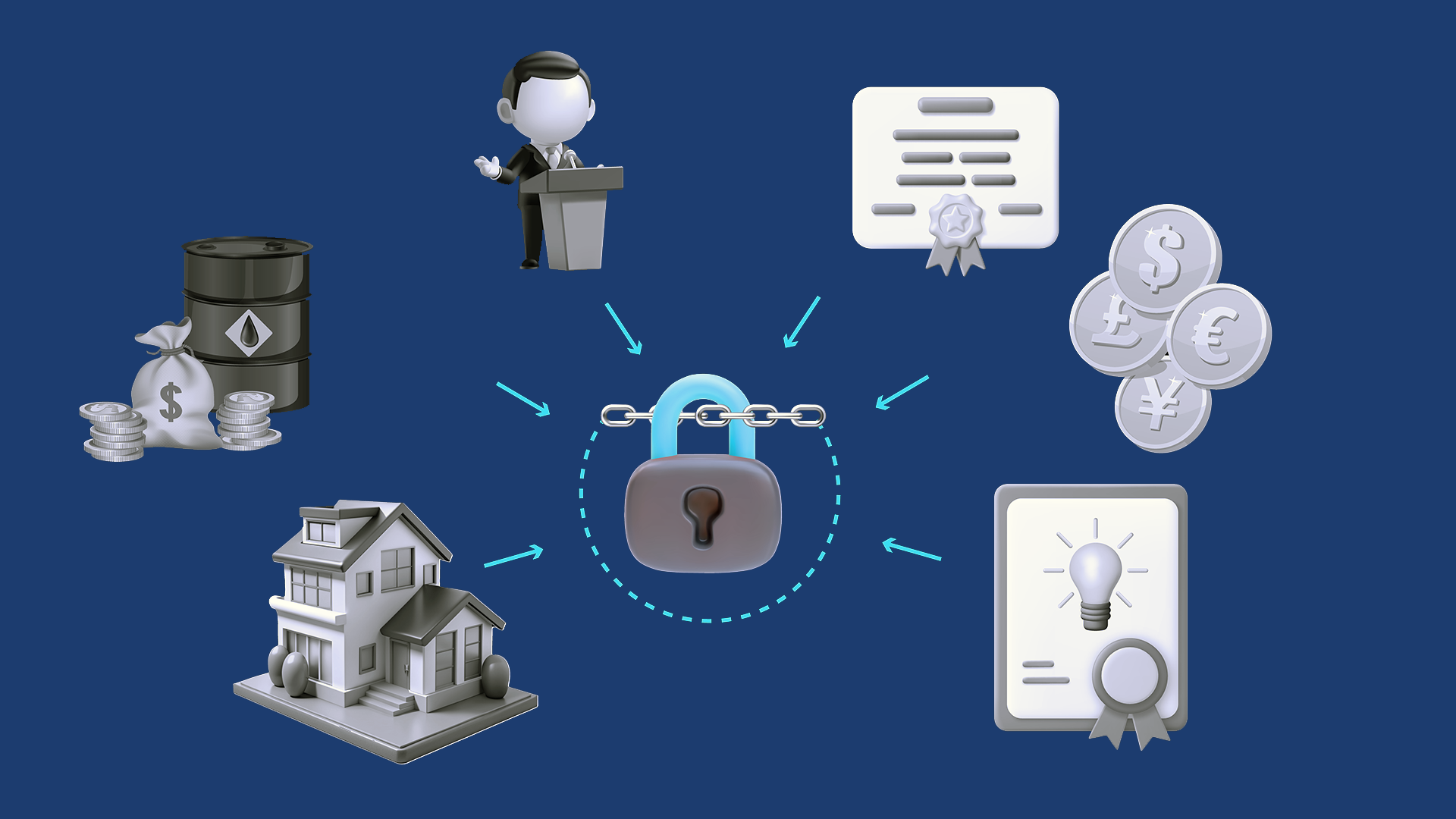
Commodities
Commodities, such as gold, oil, and agricultural products, are another area where asset tokenization can have a significant impact. Traditionally, investing in commodities has been complex and requires dealing with intermediaries, such as brokers and exchanges. However, tokenization can simplify the process by allowing investors to purchase digital tokens representing ownership in a commodity.
For example, a gold bar could be tokenized into digital tokens, with each token representing a specific amount of gold. Investors could purchase tokens and trade them on blockchain-based platforms, providing liquidity and making commodity investments more accessible.
Tokenization also has the potential to reduce the costs associated with commodity trading by eliminating the need for intermediaries and streamlining the transaction process. This could lead to greater efficiency and lower costs for investors.
Intellectual Property
Intellectual property (IP) is an increasingly valuable asset class, and tokenization can provide new ways to monetize and trade IP assets. For example, a patent could be tokenized into digital tokens, with each token representing a share in the ownership of the patent. These tokens could be traded on blockchain-based platforms, allowing investors to buy and sell ownership stakes in the patent.
Tokenization can also provide greater transparency and efficiency in the licensing of IP assets. By using smart contracts, licensing agreements can be automated and enforced, reducing the need for intermediaries and ensuring that royalties are distributed fairly and efficiently.
Other Use Cases
While real estate and art have been at the forefront of asset tokenization, the technology’s potential extends far beyond these sectors.
Tokenization of Financial Instruments
Traditional financial instruments, such as stocks, bonds, and derivatives, can be transformed into digital tokens, revolutionizing capital markets. Tokenized securities offer enhanced liquidity, fractional ownership, and reduced settlement times. For instance, STO (Security Token Offerings) have emerged as an alternative to traditional IPOs, allowing for more efficient fundraising and investment. Moreover, tokenization can facilitate the creation of complex financial products, such as structured investments and derivatives, with greater precision and transparency.
Supply Chain Optimization Through Tokenization
Tokenization can revolutionize supply chain management by providing unprecedented visibility and traceability. Each product or asset can be represented by a unique token, enabling real-time tracking of its journey from origin to consumer. This transparency helps combat counterfeiting, ensures product authenticity, and optimizes logistics. For example, in the luxury goods industry, tokenized products can verify their provenance and prevent the sale of counterfeit items. Additionally, tokenized supply chain data can be used to create valuable insights for businesses, such as demand forecasting and inventory management.
Gaming and Virtual Economies
The gaming industry is a fertile ground for asset tokenization. In-game items, virtual lands, and digital collectibles can be transformed into tradable tokens, creating vibrant virtual economies. Players can buy, sell, and trade these assets, fostering a sense of ownership and engagement. For example, the popular game Axie Infinity has successfully implemented tokenization, allowing players to earn real-world money by breeding and trading digital pets. This model has generated significant interest and revenue.
Regulatory Landscape
The regulatory landscape for asset tokenization is still evolving, with different countries taking varying approaches to the regulation of digital tokens and blockchain technology. As asset tokenization continues to grow, it is essential for regulatory frameworks to keep pace in order to provide legal clarity and protect investors.
The global regulatory environment for asset tokenization is complex and fragmented, with different countries taking different approaches to the regulation of digital tokens. In some jurisdictions, digital tokens are classified as securities and are subject to the same regulations as traditional financial instruments. In others, digital tokens are classified as commodities or utilities and are subject to different regulatory requirements.
For example, in the United States, the Securities and Exchange Commission (SEC) has taken a cautious approach to the regulation of digital tokens, classifying many tokens as securities and subjecting them to the same regulations as traditional financial instruments. This has led to increased scrutiny of token offerings and has made it more challenging for companies to launch tokenized assets.
In contrast, countries like Switzerland and Singapore have taken a more progressive approach to the regulation of digital tokens, providing clear guidelines and regulatory frameworks for token offerings. This has made these countries attractive destinations for companies looking to launch tokenized assets.
Challenges and Opportunities
The regulatory landscape for asset tokenization presents both challenges and opportunities. On the one hand, regulatory uncertainty can create barriers to entry for companies looking to launch tokenized assets, as they may face legal challenges and compliance costs. On the other hand, clear and consistent regulatory frameworks can provide legal clarity and protect investors, helping to foster the growth of the asset tokenization market.
One of the key challenges facing regulators is how to balance the need for investor protection with the need to foster innovation. Tokenization is a rapidly evolving field, and regulators must be careful not to stifle innovation by imposing overly restrictive regulations. At the same time, they must ensure that investors are protected from fraud and other risks associated with digital tokens.
Another challenge is the need for international coordination on regulatory frameworks. As asset tokenization is a global phenomenon, it is essential for countries to work together to develop consistent and harmonized regulations. This will help to create a level playing field for companies and investors and will reduce the risk of regulatory arbitrage.
Market Analysis and Trends
The market for asset tokenization is still in its early stages, but it is growing rapidly. According to a report by Deloitte, the global market for asset tokenization is expected to reach $16.1 trillion by 2030. This growth is being driven by a number of factors, including the increasing adoption of blockchain technology, the growing demand for alternative investments, and the need for greater liquidity and efficiency in financial markets.
Investor Behavior
Investor behavior is also evolving in response to the growth of asset tokenization. As more investors become aware of the potential benefits of tokenized assets, such as fractional ownership and increased liquidity, they are increasingly looking to include tokenized assets in their portfolios.
At the same time, institutional investors are starting to take an interest in asset tokenization, driven by the potential for higher returns and the ability to diversify their portfolios. This is leading to the development of new investment products and services, such as digital asset funds and tokenized real estate platforms, designed to meet the needs of institutional investors.
Future Growth Projections
The asset tokenization market is poised for significant growth, propelled by a confluence of factors.
Increasing Adoption of Blockchain Technology
The maturation and widespread acceptance of blockchain technology is a primary catalyst for asset tokenization’s expansion. As more businesses and individuals become familiar with blockchain’s underlying principles of decentralization, transparency, and security, its application to asset management becomes increasingly appealing. For instance, the real estate industry has seen a surge in interest in tokenizing properties, enabling fractional ownership and streamlined transactions.
Growing Demand for Alternative Investments
The traditional investment landscape is evolving. With declining returns in traditional asset classes like stocks and bonds, investors are actively seeking alternative investment opportunities. Tokenized assets offer a compelling proposition, providing access to a diverse range of asset classes, from fine art and collectibles to real estate and commodities. This diversification potential is expected to drive substantial growth in the market.

Regulatory Clarity and Support
A clear and supportive regulatory environment is crucial for the widespread adoption of asset tokenization. While regulatory frameworks are still emerging in many jurisdictions, progress is being made. As governments and regulatory bodies develop comprehensive guidelines, investor confidence will increase, leading to greater participation in the market. For example, the establishment of clear tax implications for tokenized assets is essential for encouraging investment.
Technological Advancements
The relentless pace of technological innovation is fueling the growth of asset tokenization. Advancements in areas such as scalability, interoperability, and security are enhancing the efficiency and attractiveness of tokenized assets. For example, the development of layer-2 solutions for blockchain platforms is addressing scalability challenges, enabling faster and cheaper transactions. Moreover, advancements in artificial intelligence and machine learning are being applied to tokenization, improving risk assessment and asset valuation.
Benefits and Challenges
Asset tokenization offers a wide range of benefits, but it also presents several challenges that need to be addressed.
Benefits
Asset tokenization offers a multitude of advantages that are reshaping traditional financial landscapes.
Enhanced Liquidity
One of the most compelling benefits of asset tokenization is the significant boost in liquidity. By transforming real-world assets into digital tokens, fractional ownership becomes feasible. This allows assets that were once considered illiquid, such as real estate, art, and private equity, to be divided into smaller, tradeable units. Consequently, a broader investor base can participate, increasing trading volume and price discovery. For instance, a valuable piece of art, traditionally held by a single owner, can be tokenized, allowing multiple investors to own fractions of the artwork. This not only democratizes access to high-value assets but also creates a more dynamic and efficient market.
Increased Accessibility
Tokenization dramatically lowers the barriers to entry for investors. Traditionally, investing in assets like real estate or fine art required substantial capital, limiting participation to high-net-worth individuals. With tokenization, investors can purchase fractional ownership with relatively small amounts of capital. This democratization of investment opportunities expands the investor pool and promotes financial inclusion. Moreover, tokenized assets can be traded on digital exchanges, providing 24/7 access to a global market.

Operational Efficiency and Cost Reduction
Tokenization streamlines the asset lifecycle by eliminating intermediaries, such as brokers and custodians. Smart contracts automate many processes, reducing paperwork, settlement times, and operational costs. For example, property transfers can be executed efficiently and securely on a blockchain, bypassing the lengthy and complex traditional title transfer process. This increased efficiency translates into cost savings for both issuers and investors.
Transparency and Trust
Blockchain technology, the foundation of tokenization, provides an unparalleled level of transparency. Every transaction is recorded on an immutable ledger, creating an auditable trail that enhances trust and accountability. This transparency reduces information asymmetry and mitigates the risk of fraud. For instance, tokenized securities can provide investors with real-time access to information about the underlying asset, enabling informed decision-making. Additionally, the decentralized nature of blockchain diminishes counterparty risk, as there is no single point of failure.
New Investment Opportunities
Asset tokenization unlocks a vast array of new investment opportunities. Investors can gain exposure to previously inaccessible asset classes, diversifying their portfolios and potentially enhancing returns. For example, tokenized real estate investment trusts (REITs) allow investors to participate in real estate markets without the complexities of direct property ownership. Furthermore, tokenization can facilitate the creation of innovative financial instruments, such as asset-backed securities and structured products.
These benefits collectively position asset tokenization as a transformative force in the financial industry, with the potential to revolutionize how assets are owned, traded, and managed.
Challenges
Despite the promising potential of asset tokenization, several hurdles must be overcome for its widespread adoption.
Security Risks
While blockchain technology is renowned for its security, it is not entirely invulnerable. Sophisticated cyberattacks, such as hacking, phishing, and smart contract vulnerabilities, pose significant threats to tokenized assets. A high-profile security breach could erode investor confidence and hinder market growth. For instance, the theft of millions of dollars worth of cryptocurrency from various exchanges has highlighted the need for robust security measures.
Regulatory Uncertainty
The regulatory landscape surrounding asset tokenization is complex and evolving rapidly. Inconsistencies across jurisdictions create challenges for businesses seeking to issue tokenized assets. Compliance costs can be substantial, and the risk of regulatory changes can introduce uncertainty for investors. For example, the classification of tokens as securities or commodities has significant implications for issuers and investors, and regulatory clarity in this area is essential.
Market Volatility
The cryptocurrency market, which often serves as a benchmark for tokenized assets, is characterized by high volatility. This price instability can create significant risks for investors and undermine the appeal of tokenization as a stable investment vehicle. While diversification strategies can help mitigate this risk, market volatility remains a challenge.
Technological Limitations
The successful implementation of asset tokenization relies on advanced technology infrastructure. Scalability, interoperability, and the efficient handling of large volumes of data are critical. While blockchain technology has made significant strides, challenges persist in these areas. Moreover, the development and maintenance of robust smart contracts require specialized expertise, which can be costly and time-consuming.
Valuation Challenges
Accurately valuing tokenized assets can be complex, especially for asset classes with limited historical data or those subject to market fluctuations. Traditional valuation methods may not be directly applicable to digital assets, necessitating the development of new valuation models. For instance, valuing a tokenized piece of real estate might require considering factors such as property location, market conditions, and the overall performance of the real estate market.
Addressing these challenges is crucial for the sustainable growth of the asset tokenization industry. Continued innovation, regulatory clarity, and investor education will be essential to unlock the full potential of this transformative technology.
Future Outlook
The future of asset tokenization is bright, with the potential to transform global financial systems and create new opportunities for investors and companies alike. As blockchain technology continues to mature, and regulatory frameworks become more consistent, it is expected that asset tokenization will become increasingly mainstream.
Impact on Global Financial Systems
Asset tokenization has the potential to significantly impact global financial systems by increasing liquidity, accessibility, and efficiency in financial markets. By enabling fractional ownership and reducing the need for intermediaries, tokenization can democratize investment opportunities and make it easier for investors to participate in a wide range of markets.
In addition, tokenization can increase transparency and reduce the risk of fraud, as all transactions are recorded on a decentralized ledger. This can lead to greater trust in financial markets and improve the overall stability of the global financial system.
Adoption by Institutional Investors
Institutional investors are expected to play a key role in the future growth of asset tokenization. As more institutional investors become aware of the potential benefits of tokenized assets, they are likely to increase their allocation to these assets, driving demand and fostering the development of new investment products and services.
This could lead to the creation of new markets and trading platforms specifically designed for institutional investors, as well as the development of new financial instruments and derivatives based on tokenized assets.
Integration with Decentralized Finance (DeFi)
Asset tokenization is also expected to play a significant role in the growth of decentralized finance (DeFi), a rapidly evolving sector that leverages blockchain technology to create decentralized financial products and services. By integrating tokenized assets with DeFi platforms, investors can gain access to a wide range of financial services, such as lending, borrowing, and trading, without the need for traditional financial intermediaries.
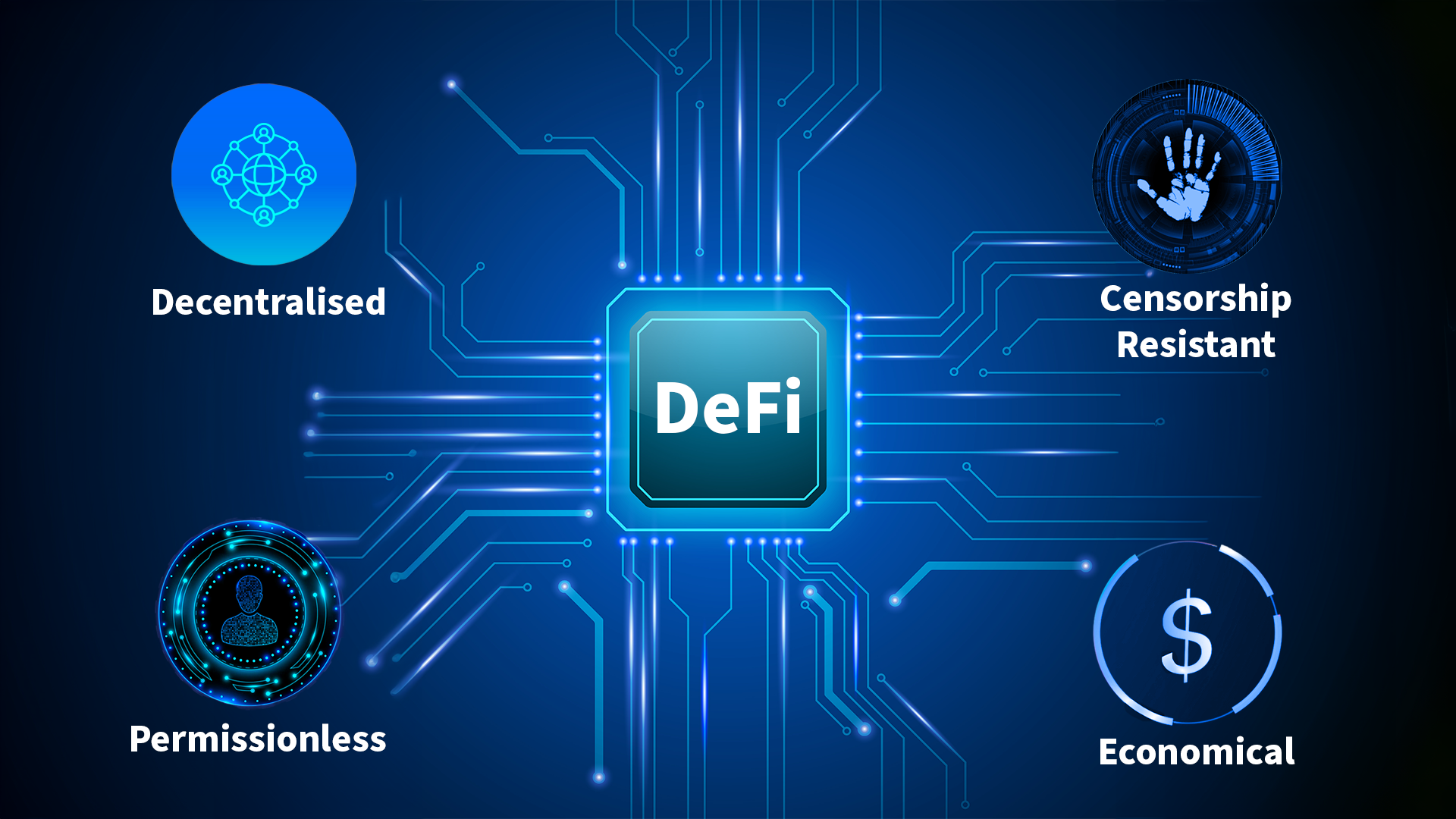
This could lead to the creation of new DeFi products and services specifically designed for tokenized assets, such as decentralized exchanges for trading tokenized real estate or art. It could also drive the development of new financial instruments, such as tokenized bonds or derivatives, that can be traded on DeFi platforms.
Tokenization and Sustainable Investing
The convergence of asset tokenization and sustainable investing is catalyzing a new era of transparent and accessible impact investing. By leveraging blockchain technology, tokenization offers a powerful tool to enhance the credibility, efficiency, and reach of ESG-aligned investments.
Enhanced Transparency and Trust
One of the primary challenges in sustainable investing is ensuring the accuracy and reliability of ESG data. Tokenization addresses this issue by providing a transparent and immutable record of sustainability performance. Smart contracts can be programmed to automatically verify and record ESG metrics, reducing the risk of greenwashing. For example, a tokenized renewable energy project could embed data on energy generation, carbon emissions, and community impact directly into the token, providing investors with real-time information about the project’s performance. This level of transparency fosters trust between investors and issuers, driving capital towards truly impactful projects.
Democratizing Impact Investing
Tokenization has the potential to democratize access to sustainable investments by lowering the entry barriers. Traditionally, investing in sustainable projects often required significant capital and complex investment structures. With tokenization, investors can participate in these projects with smaller amounts of capital, allowing a broader range of individuals to contribute to a more sustainable future. For instance, tokenized impact bonds can enable small investors to support social enterprises addressing issues such as poverty, education, and healthcare.
Accelerating Sustainable Finance
By increasing liquidity and efficiency, tokenization can accelerate the flow of capital towards sustainable projects. Tokenized assets can be traded on secondary markets, providing investors with an exit option and encouraging long-term investment. Moreover, the speed and cost-effectiveness of tokenized transactions can reduce the time and expense associated with sustainable investments, making them more attractive to a wider audience. For example, tokenized carbon credits can facilitate their trading and create new financial instruments for carbon offset projects, stimulating investment in carbon reduction initiatives.
Measuring Impact and Creating New Financial Instruments
Tokenization enables the development of innovative financial instruments that align with sustainability goals. Impact tokens, for instance, can represent the social or environmental impact of a project, allowing investors to directly track and measure their contribution to a specific cause. This can foster a new generation of impact-driven investments that go beyond traditional financial returns.
Cross-Border Transactions and Tokenization
Traditional cross-border transactions are often plagued by inefficiencies and high costs. The involvement of multiple intermediaries, such as banks, clearinghouses, and correspondent banks, introduces friction into the process. Moreover, the complexities of different regulatory frameworks, foreign exchange conversion, and settlement procedures can significantly prolong transaction times. For instance, international wire transfers can take several days to complete, with costs ranging from several tens to hundreds of dollars.
Asset tokenization offers a potential solution to these challenges by streamlining cross-border transactions. By representing real-world assets as digital tokens, tokenization enables direct peer-to-peer transfers on blockchain networks. This eliminates the need for intermediaries, reducing transaction costs and accelerating settlement times. For example, tokenized securities can be traded instantly across borders, providing investors with greater access to global markets.
However, realizing the full potential of cross-border tokenization requires a harmonized regulatory environment. Currently, there is a patchwork of regulations governing digital assets across different jurisdictions. This inconsistency creates legal uncertainty and hinders the development of cross-border tokenization ecosystems. To address this, international cooperation is essential to establish clear and consistent regulatory frameworks.
Furthermore, interoperability between different blockchain platforms is crucial for seamless cross-border transactions. While significant progress has been made in developing interoperability protocols, challenges remain in ensuring secure and efficient communication between disparate systems.
Despite these hurdles, the potential benefits of cross-border tokenization are substantial. By reducing costs, increasing speed, and enhancing transparency, tokenization can revolutionize the way assets are traded globally. As regulatory clarity and technological advancements continue to progress, we can expect to see a growing adoption of tokenization for cross-border transactions, fostering greater financial inclusion and economic growth.
Integration with AI and Machine Learning
The synergy between asset tokenization and artificial intelligence (AI) is poised to revolutionize the way assets are valued, traded, and managed. By leveraging the power of AI and machine learning (ML), tokenization platforms can achieve unprecedented levels of efficiency, accuracy, and sophistication.
AI-Driven Asset Valuation
AI’s ability to process vast amounts of data with unparalleled speed and accuracy makes it an ideal tool for asset valuation. By analyzing historical price data, market trends, economic indicators, and other relevant factors, AI algorithms can generate real-time valuations for tokenized assets. This can significantly reduce valuation time and improve accuracy compared to traditional methods. For instance, in the real estate sector, AI can analyze property characteristics, location, market conditions, and comparable sales data to provide precise property valuations.
Furthermore, AI can identify complex patterns and correlations in data that may be overlooked by human analysts. This can lead to the discovery of new valuation factors and the development of more sophisticated valuation models. For example, in the art market, AI can analyze images of paintings to identify stylistic elements and predict future price trends, helping to assess the value of tokenized artworks.
Smart Contracts Enhanced by AI
The integration of AI into smart contracts can unlock new possibilities for asset tokenization. By incorporating AI capabilities, smart contracts can become more dynamic and responsive to changing market conditions. For example, AI algorithms can be used to optimize rental prices for tokenized real estate based on demand, seasonality, and other factors. Additionally, AI can enable predictive maintenance for tokenized assets, such as equipment or vehicles, by analyzing sensor data to predict potential failures and schedule maintenance accordingly.
Challenges and Considerations
While the potential benefits of AI in asset tokenization are significant, several challenges must be addressed. Data quality and availability are critical for AI models to produce accurate results. Ensuring data privacy and security is paramount to protect sensitive information. Moreover, there is a risk of algorithmic bias if the training data is not representative of the target population.
Additionally, the rapid evolution of AI technology raises regulatory concerns. Clear guidelines are needed to govern the use of AI in financial services and to protect investors. As AI becomes increasingly integrated into tokenization platforms, it is essential to establish robust governance frameworks and ethical standards.
Despite these challenges, the combination of asset tokenization and AI holds immense promise for transforming the way assets are managed and traded. By addressing the challenges and capitalizing on the opportunities, this powerful combination can drive innovation and create new value for investors and businesses alike.
Conclusion
Asset tokenization represents a significant shift in the way we perceive and interact with real-world assets. By converting physical assets into digital tokens on a blockchain, tokenization opens up new opportunities for investment, liquidity, and efficiency. While there are still challenges to be addressed, such as security and regulatory issues, the potential benefits of tokenization are vast and far-reaching.
As the market for asset tokenization continues to grow, it is expected that more companies and investors will embrace this innovative technology, driving the development of new products, services, and markets. The future of asset tokenization is bright, and it has the potential to transform global financial systems and create new opportunities for investors and companies alike.
Whether you are a digital asset management consultant, a blockchain asset investments consultant, or a crypto investment firm, staying ahead of the trends in asset tokenization will be crucial in navigating this rapidly evolving landscape. As more assets are brought on-chain and new opportunities emerge, those who are prepared will be well-positioned to capitalize on the future of asset tokenization.
Work With Kenson
At Kenson Investments, we’re committed to empowering our clients with the knowledge and insights they need to make informed decisions. Our mission is to simplify complex financial concepts, offering clear, understandable guidance that helps you navigate your financial journey with confidence. Join us, and let’s explore the possibilities together—because your understanding is our priority.



